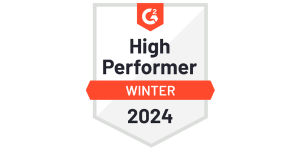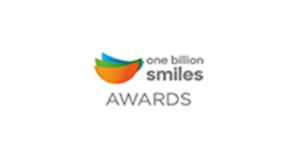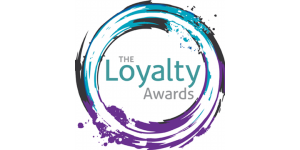11 Jun

Loyalty is a powerful concept in the B2B environment. Companies have long relied on engagement incentives and rewards programs to establish loyalty within their channel. Customer or member redemption, without a doubt, is the foundation of any rewards program’s long-term success. This makes the loyalty redemption rate a powerful indicator of whether your channel loyalty strategy is performing. Thus, enabling your channel to redeem easily will be a win-win situation. What makes the difference here is the technological base you use to implement features that encourage redemption.
Research on B2B loyalty has primarily focused on the main brand rather than the channel members. However, the existence of metrics like redemption rate today is promising since they imply special care for the customer aspect. There lies the awareness and the wish to understand your partners more behind these metrics. Like Apex Loyalty, platforms adopting these metrics are a gateway to a more fruitful loyalty experience.
What is Loyalty Redemption Rate?
The loyalty program redemption rate refers to the percentage of loyalty points or rewards that customers use or redeem from their earned points or rewards. This rate is a critical metric for businesses that operate loyalty programs, as it reflects the level of engagement and perceived value of the program to the customers.
Anyone familiar with the dynamics of B2B would appreciate the following words of common sense in the trade context: Retaining old customers is way harder than acquiring new ones. This also applies to your relationship with channel partners that you value deeply. Rewarding them is an appealing way to cultivate engagement, but it’s not as simple as it may sound.
The “Your Loyalty Program Is Betraying You” article in Harward Business Review describes receiving a reward as a “pleasant association with the brand.” It’s great to evoke such feelings in a customer or business partner, but you also get material benefits. How? Research suggests customers who redeem rewards in loyalty programs tend to purchase more before and after the redeeming process. As controversial as it may sound, you encourage them to purchase more, even after they receive their share. We must, therefore, value it as an opportunity to influence future purchase behavior for a long-term commitment.
Why is Measuring The Redemption Rate So Important?
Measuring the redemption rate is crucial in various industries, especially in marketing and finance, as it offers valuable insights into consumer behavior and the effectiveness of promotional strategies. In marketing, it helps assess the success of coupon campaigns, loyalty programs, and other incentives. A high rate indicates that the promotion resonates well with the target audience, leading to increased sales and customer engagement. Conversely, a low rate may suggest the need for adjustment in the marketing strategy.
The Causes of Decreased Redemption Rate
In recent years, businesses have observed a notable decrease in the redemption rate of various promotional offers, coupons, and loyalty programs. This decline can be attributed to several key factors. Firstly, digital overload plays a significant role; consumers are bombarded with an overwhelming number of offers across multiple platforms, leading to a phenomenon called ‘offer fatigue.’ This saturation makes it challenging for any promotion to stand out and capture attention.
There’s a shift in consumer preferences and behaviors. Modern consumers, especially millennials and Gen Z, prioritize experiences over material goods. They are likelier to engage with offers that provide unique experiences or substantial value than traditional discount-based incentives.
The complexity and restrictions of some redemption processes deter participation. Cumbersome procedures, such as lengthy forms or confusing terms and conditions, can discourage customers from engaging with the offer. Simplicity and ease of use are crucial in increasing redemption rates. Lastly, more personalization is needed to contribute to the decline. Generic offers that do not cater to the specific interests or needs of the consumer are less likely to be redeemed. In an era where data-driven personalization is possible, offers that fail to leverage customer data effectively miss the opportunity to resonate with their intended audience.
Challenges in Increasing Redemption Rate
Technically speaking, the loyalty redemption rate is the number you get by dividing the sum of points spent on rewards by the total number of points issued. However, research unveils a general average loyalty redemption rate across trade ecosystems. Brace yourselves: The redemption rate of an average rewards program is barely over 10%. What a pity, and what a loss of potential. Where did we make a mistake?
On the other hand, you might have implemented a full-fledged loyalty platform like Apex Loyalty and offered appealing rewards programs for your channel. But an important thing that shouldn’t be missed is that you cannot treat it as a single-time thing. Channel needs and interests will change, and the industry dynamics in which each member operates will change. We don’t stay the same person we used to be, so treat your channel as such. If the rate is low in your loyalty program, below are some questions to ask yourself:
- Are you offering different ways to earn points?
Apex Loyalty enables point collection through various activities, from educational tools to campaigns.
- Is redemption taking place only in the traditional sense?
Apex Loyalty takes this notion from a catalog to choose from built-in rewards that feel more natural and fun. On-site rewards give a seamless feeling.
- Are you offering a seamless experience?
People are busy, as are your partners. Thanks to its features, Apex Loyalty provides the seamless feeling we seek amidst daily hassles. Modern presentation styles also positively influence members’ perceptions of the value offered by the reward.
- Is your rewards program mainly about material gifts, or is there any room for social engagement?
The success stories Apex Loyalty was utilized in are exceptional examples of how marketing automation can act as a tool for raising social awareness.
- Are you regularly updating your channel?
On-site engagement tools on Apex Loyalty are there for real-time and frequent communication.
More Apex Loyalty Offerings
Apex Loyalty, we know that if there’s not enough redemption in your rewards program, there’s low engagement in your channel. If members are not tempted to redeem, there’s a high chance that the rewards or the presentation of rewards are irrelevant. Moreover, they might be out of context regarding industry dynamics. Including the above points, the average redemption rate for loyalty programs is impacted by more factors. Meanwhile, the industry is one of them. Apex Loyalty is especially powerful because our know-how comes from various sectors. Our skills in understanding your customer behavior and preferences result in perfectly tailored reward campaigns for your brand. For channel members, points collection and redemption are among the most memorable components of their membership experience. We make sure to build your unique programs on this basis and make this memorable experience exceptional.
You can read our previous article from https://www.apexloyalty.com/what-is-enrollment-rate-in-loyalty/











